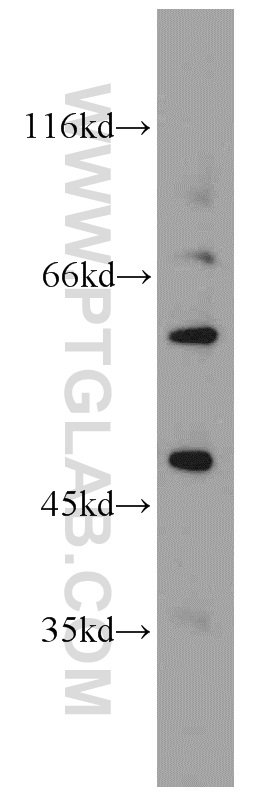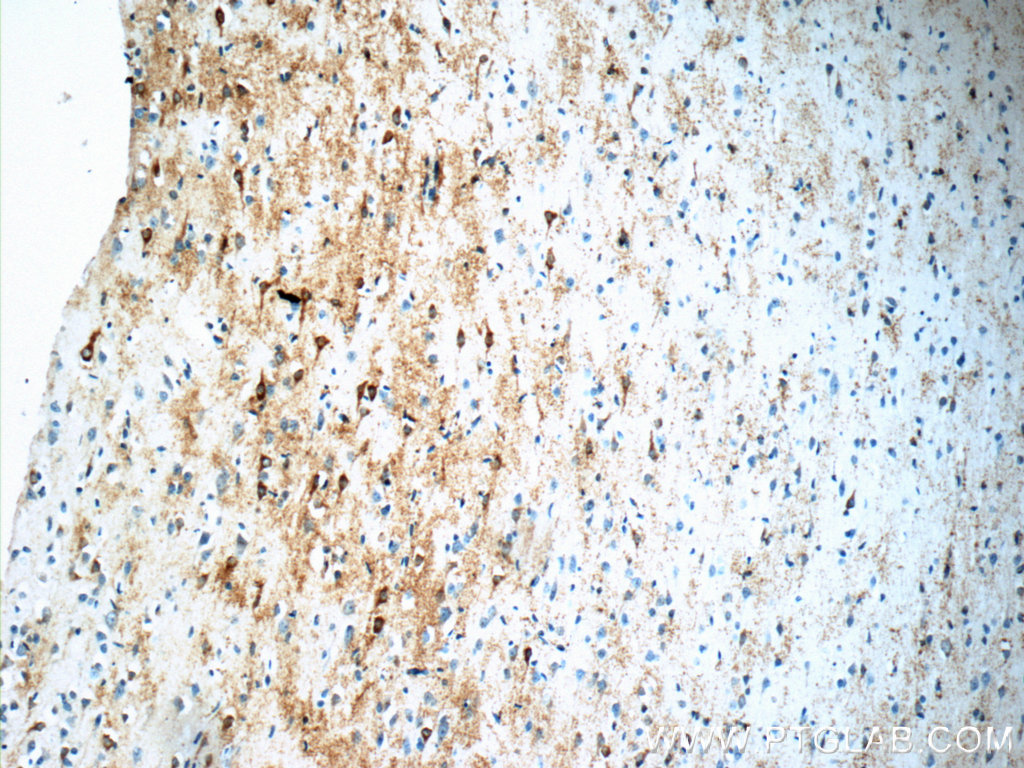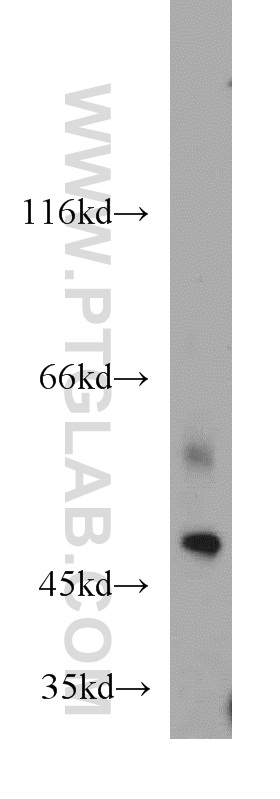验证数据展示
产品信息
19965-1-PBS targets Kir2.1 in WB, Indirect ELISA applications and shows reactivity with human, mouse, rat samples.
| 经测试应用 | WB, Indirect ELISA Application Description |
| 经测试反应性 | human, mouse, rat |
| 免疫原 | Peptide 种属同源性预测 |
| 宿主/亚型 | Rabbit / IgG |
| 抗体类别 | Polyclonal |
| 产品类型 | Antibody |
| 全称 | potassium inwardly-rectifying channel, subfamily J, member 2 |
| 别名 | KCNJ2, IRK-1, IRK1, IRK 1, hIRK1 |
| 计算分子量 | 48 kDa |
| 观测分子量 | 50 kDa, 60 kDa |
| GenBank蛋白编号 | NM_000891 |
| 基因名称 | Kir2.1 |
| Gene ID (NCBI) | 3759 |
| RRID | AB_10859827 |
| 偶联类型 | Unconjugated |
| 形式 | Liquid |
| 纯化方式 | Antigen affinity purification |
| UNIPROT ID | P63252 |
| 储存缓冲液 | PBS only, pH 7.3. |
| 储存条件 | Store at -80°C. The product is shipped with ice packs. Upon receipt, store it immediately at -80°C |
背景介绍
KCNJ2, also named as HHBIRK1, HHIRK1, IRK1, KIR2.1, LQT7 and SQT3, belongs to the inward rectifier-type potassium channel family. KCNJ2 probably participates in establishing action potential waveform and excitability of neuronal and muscle tissues. Inward rectifier potassium channels are characterized by a greater tendency to allow potassium to flow into the cell rather than out of it. Their voltage dependence is regulated by the concentration of extracellular potassium; as external potassium is raised, the voltage range of the channel opening shifts to more positive voltages. The inward rectification is mainly due to the blockage of outward current by internal magnesium. KCNJ2 can be blocked by extracellular barium or cesium. Defects in KCNJ2 are the cause of long QT syndrome type 7 (LQT7). Defects in KCNJ2 are the cause of short QT syndrome type 3 (SQT3). The antibody recognizes the C-term of KCNJ2.


